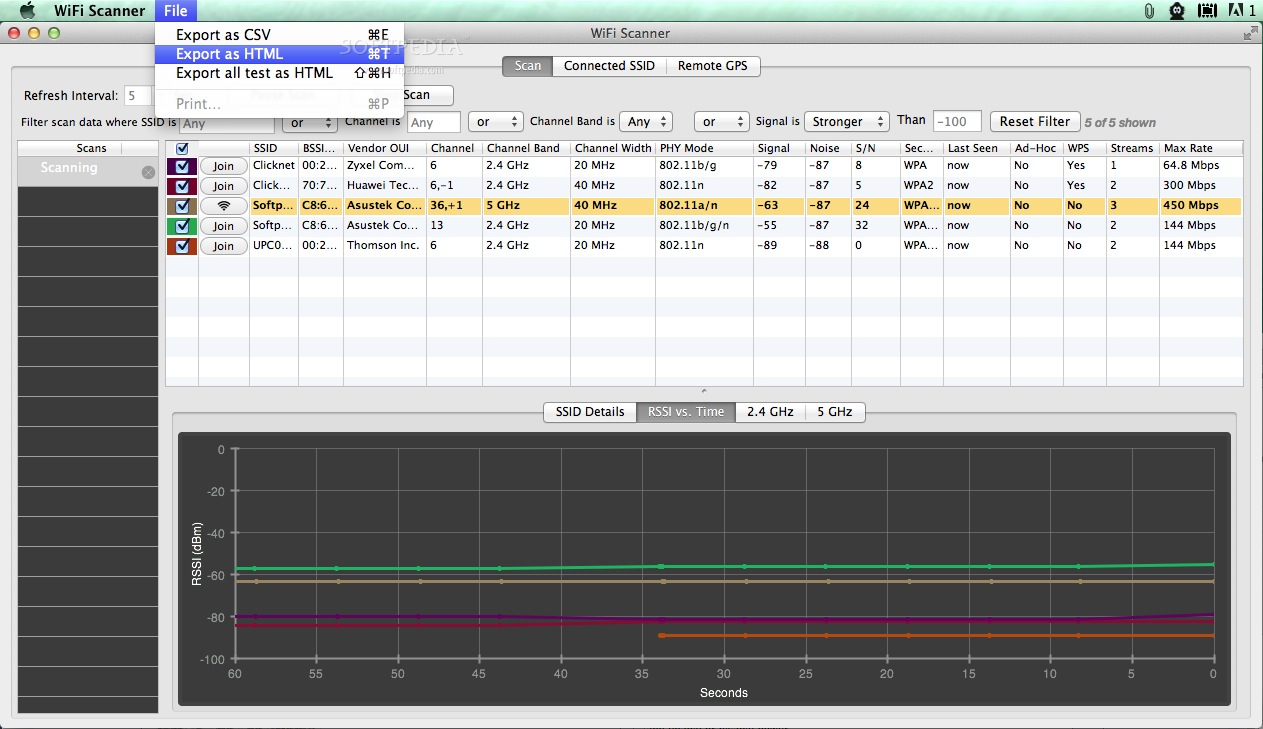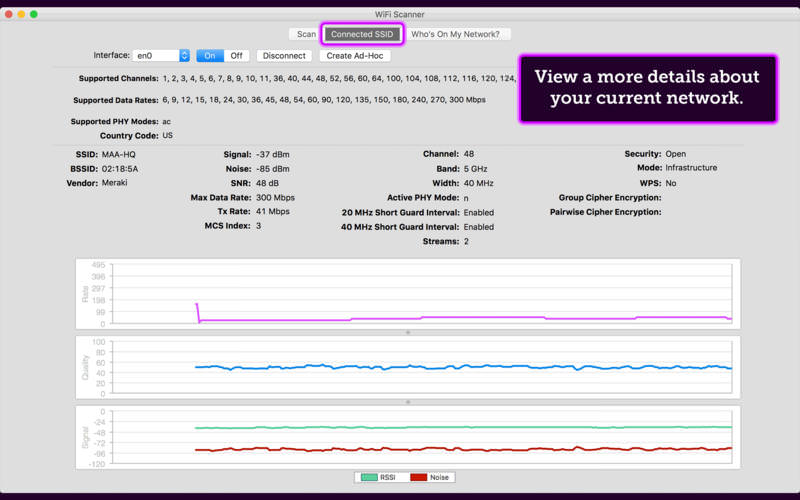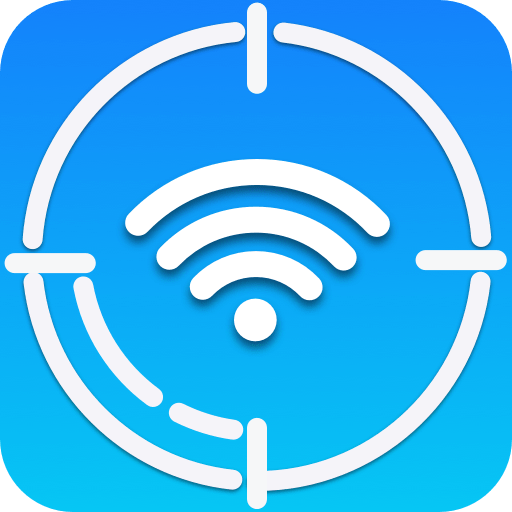

It’s all packed into an app for your laptop, smartphone, or tablet. Also, you no longer don’t need special hardware to harness the power of a Wi-Fi analyzer. Fast forward to today, and Wi-Fi networks flood us. Moreover, through signal strength (dBm) analysis, you can figure out the optimum placement for your router/AP.īack in the day, only large organizations would invest in Wi-Fi analyzers (which were dedicated hardware) to ensure strong Wi-Fi signals. Think of a Wi-Fi analyzer as your internet consultant: It helps you troubleshoot Wi-Fi issues and recommends fixes.
MACOS WIFI SCANNER FOR MAC
In a nutshell, Wi-Fi analyzer tools collect and present key data points from APs (access points) in your network – helping you find ways to accelerate your Wi-Fi speed! Overview of the Top 11 Wi-Fi Analyzer Tools for Mac in 2022 This is where a Wi-Fi analyzer app can do wonders for you. However, many never really tweak the default wireless router configuration, resulting in many wireless routers transmitting data via the same channel.

Theoretically, 11 channels should suffice even super populated areas.

The 2.4 GHz has 11 channels in the North American region. Now, this band consists of several channels – just like the lanes on a highway. Most wireless routers have a 2.4 GHz radio band for data transmission. Wireless Router Basics 101: For the Absolute Beginner Everybody, literally everybody, wants to jump aboard the Wi-Fi bandwagon, and Cisco’s research reveals that by 2023, there will be a whopping 29.3 billion devices connected to IP networks. The bottom line is that Wi-Fi has become an indispensable resource, just like food and water. A recent survey on Wi-Fi trends concludes that 71% of travelers usually avoid hotels that charge for a Wi-Fi connection. We ask the question, “Is there Wi-Fi?” more often than anything else.
MACOS WIFI SCANNER HOW TO

Roaming involves the client authenticating against the new BSSID and deauthenticating from the current BSSID. Roam performance describes how long a client needs to authenticate successfully to a new BSSID.įinding a valid network and AP is only part of the process. The client must complete the roam process quickly and without interruption so the user doesn't experience downtime. This is true even if the macOS client is idle or transmitting/receiving data. MacOS selects a target BSSID whose reported RSSI is 12 dB or greater than the current BSSID’s RSSI. MacOS Monterey supports 802.11k on Mac computers with Apple silicon.Įarlier versions of macOS don't support 802.11k but do interoperate with SSIDs that have 802.11k enabled.


 0 kommentar(er)
0 kommentar(er)
